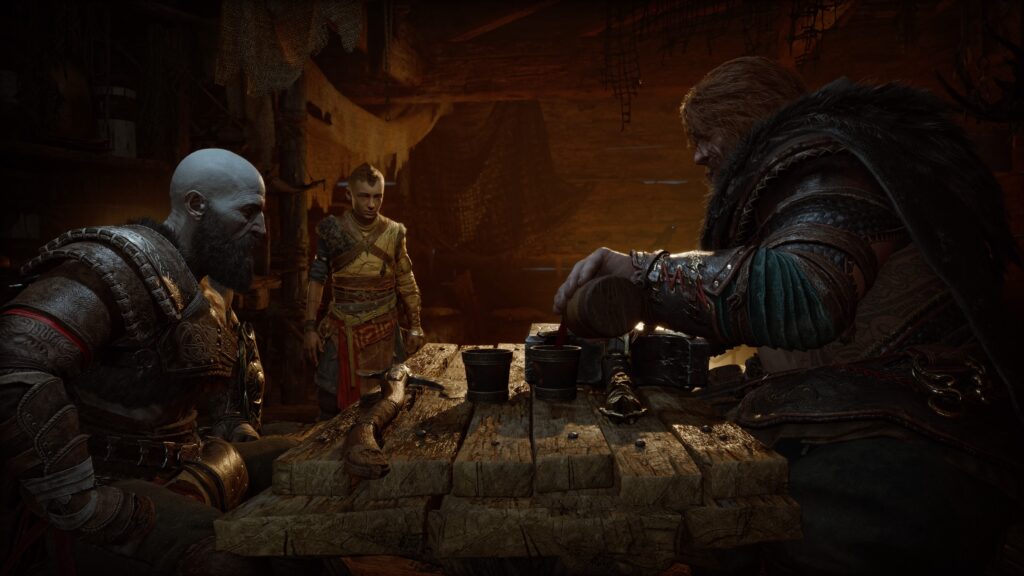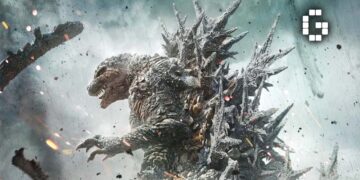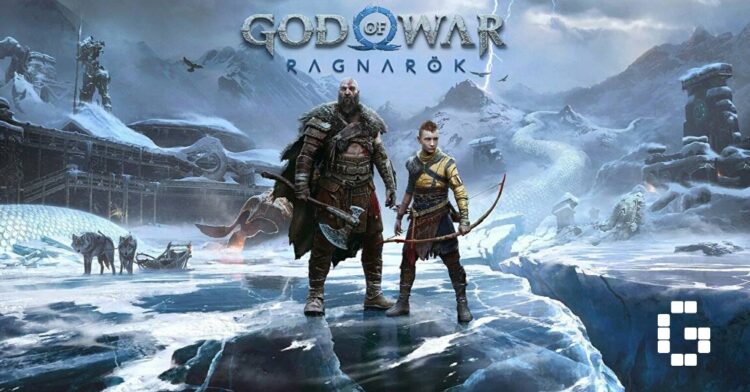Ragnarok has arrived, a war so large in scale that it causes the world itself to end, but the Vikings of old wouldn’t have the apocalypse in any other way. The same can be said for God of War Ragnarok.
While Kratos’s latest tale of god killing and son raising may at times feel too similar to the first game, it does everyone both a sequel and the end of a saga should. The gameplay is updated, the world of vaster than ever, and this father-son story comes to a fitting end.
Preparing For Ragnarok
 God of War Ragnarok starts off pretty much where the last game ended. After Kratos and Atreus’ adventure to reach the top of Jotunheim, they are now faced with a far great threat told by the prophecy – Ragnarok, the war of the gods that will lead to the end of the world. In order to prevent this, Atreus wants to seek the truth about himself as Loki while keeping many secrets from his father. Meanwhile, Kratos doesn’t want to be involved in anything whether it’s Ragnarok or dealing with Norse gods. Unfortunately, they want to be involved with him as figures like Freya and Thor now hunt down the pair.
God of War Ragnarok starts off pretty much where the last game ended. After Kratos and Atreus’ adventure to reach the top of Jotunheim, they are now faced with a far great threat told by the prophecy – Ragnarok, the war of the gods that will lead to the end of the world. In order to prevent this, Atreus wants to seek the truth about himself as Loki while keeping many secrets from his father. Meanwhile, Kratos doesn’t want to be involved in anything whether it’s Ragnarok or dealing with Norse gods. Unfortunately, they want to be involved with him as figures like Freya and Thor now hunt down the pair.
Kratos’ days of killing gods are way behind him and he just wants to have a peaceful life with his son, but alas Atreus’ curiosity and determination to prove himself leads the two on a new journey. Setting aside all the incredible spectacle of the game, the biggest strength of the story is the characters. The father-and-son relationship is better than ever. It really gives you insight into both Kratos and Atreus and shows how much they’ve grown, especially if you remember all of the key story moments from the first game.
It’s also important to mention that Atreus is not the little “Boy” anymore. He’s far more mature and portrayed as a more established character. Besides Kratos and Atreus, almost all of the main characters especially the ones that reappeared from the first game also have their own key story moments that evolved through the game. Though there are a few that don’t end up with as prominent of a role as I hoped.
I can’t say much more beyond this for spoilers reasons, but if you’re here to see the conclusion of God of War’s Norse Saga, it may not be as crazy as some people theorize but I doubt you’ll be disappointed.
The Art of War
Honestly, if you already played the original game, then there’s not much I can discuss with the combat since the base mechanic and even almost all of the moveset are still the same but with some notable touch-ups and improvements.
Kratos has access to both the Leviathan Axe and Blade of Chaos far earlier in the game, giving you a lot more options for attacks from the get-go. Kratos can perform various new techniques, one of them, that is easily the most useful is Frost Awaken where he freezes the Leviathan Axe to strengthen it for his next attack. This can be used to stagger any enemy. It’s such a simple technique and yet effective at canceling any enemy moves. This means you can play more aggressively instead of always keeping a distance.
You also have your usual light attack, and heavy attack, as well as the Spartan Rage which is this special meter for Kratos berserk mode, which allows him to perform a barrage of unblockable melee attacks. This ability is now revamped and Kratos can choose between three different Spartan Rage forms consisting of Wrath, Fury, and Valor. The former two give different offensive attacks while the latter heals health. Overall they’re pretty fun although you probably won’t need Valor that often since you get so little health from it anyway.
Besides the normal moveset, Kratos can perform Light and Heavy Runic attacks by inserting special Gems into his weapon. There’s also a Shield that he can use to defend, parry, or break enemy defense entirely. Lastly, there are different Relics that can give you unique abilities but they have a cooldown period. The difference is not too drastic to the first game, but the new stuff does give a lively twist to combat.
As for Atreus, he’s definitely undergone some big changes and contributes more to fights. I can’t exactly discuss any further though, besides saying that he still mainly acts as support that you can command in battle by shooting arrows at enemies or solving puzzles.
Enemies of The Gods

The enemies have also seen an overhaul with a wider range of different creatures for Kratos to fight. Enemy attacks now have different color indicators consisting of Yellow for the heavy attacks that can be parried, Blue for a dangerous charged-up attack that you need to break with your Shield, and Red for attacks that you need to dodge. There’s also a stun bar underneath the enemy health bar to indicate how close they are to a weakened state before you can execute brutal takedowns. This makes them a lot more challenging and keeps you on your toes during fights. It’s a lot harder to just wail on the monsters and expect results.
If it’s not enough to make them challenging, there are now Nightmare Creatures that can possess enemies and make them much stronger, with some encounters just being straight-up brutal: Einherjar can apply Bifrost that can take a chunk of Kratos’s health, Elves that inhabit Alfheim are very fast and annoying, and so on. It’s a savage world out there but it keeps the game exciting as there’s always something new to challenge.
Forging Your Armour

Like with combat, the customization is still mainly the same as in the first game but more polished. The dwarf brothers, Brok and Sindri are back as the main blacksmiths that you’ll find setting up shop wherever you go. Upgrading weapons and armor is very important because this is the most effective way to enhance Kratos’ capabilities in combat. They allow him to increase his level, and stats as well as learn some new moves.
You can upgrade your axe, blades, and armor as you’d expect but there are also these new amulets of Ygdrassil that requires upgrading for greater buffs like increased offense or health. Each realm in the game has its own set of Amulets and you can get even better buffs if you have a complete set of the same type.
Kratos and Atreus have their own skill tree that is separated by their weapons. Unlocking a skill is easy because it only costs XP. The harder part however is upgrading your weapon to access the higher-skill tiers. Upgrading a weapon is not costly but the special material that you need to upgrade them is very rare and can only be obtained by making significant progress through the game. This isn’t a bad thing but it should be noted for those looking to obtain every piece of armor and weapon.
The customization as a whole is straightforward and while the game admittedly is a bit on the easy side (at least on normal difficulty) it still gives enough options to essentially build your own Kratos.
Exploring Midgard

Just like I mentioned in our early preview, the world of Ragnarok feels more open. This is mainly because you can now explore all of the nine realms and each of them looks fantastic. Svartalfheim is probably my favorite because of its sheer size and beautiful scenery, but generally, all of the realms are very diverse and unique from one another.
Some of these did exist in God of War (2018) but Ragnarok did a great job at making sure that each one of them feels different enough that you want to explore them a second time. The biggest example is The Lake of Nine in Midgard which used to serve as the hub area from the previous game. It’s portrayed as this beautiful lake with breathtaking scenery. You can even see Jormungandr chilling from the distance. In this game, however, the whole lake is completely frozen because of Fimbulwinter. At first, I didn’t even realize it and thought that I was exploring a brand new area but no, this is where you used to pass when traveling between realms. I honestly spend quite a lot of time just appreciating the beauty of the world while listening to Mimir’s stories.
Besides following the main quest, you can definitely expect a lot of side activities to do. Whether hunting for treasures, collectibles, or simply doing Favors (side quest), there’s always something to enjoy to pass the time before you’re ready to advance the story. Favors can be very important as some of them are pretty relevant to the main quest. This makes them feel extra rewarding when you go out of your way to complete them. They’re certainly not your typical fetch quests at the very least.
Swinging Kratos

Another new feature is that Kratos can swing around with his Blade of Chaos. You can reach high or far away places using the blades, which is something I definitely missed from the classic God of War series. This also changes so much to how the game feels, including the level design where some combat-oriented areas are structured so you can make use of the swinging mechanic because Kratos can also perform death from above. It makes the fights feel grander and our protagonists feel all the more powerful.
PS5 Performance & Accesibility

There’s not much to add in terms of performance. The game runs beautifully on both PS5 and PS4 and can be played as a continuous one-shot experience with almost no loading (except when dying).
It’s also not a PlayStation exclusive without a number of cool accessibility options to fiddle around with. There are at least over 60 options available that are divided by categories specifically for audio, combat, motion reduction, navigation & puzzles, playstyle, controller, visual assist, and more. Safe to say that anyone with special needs can now finally follow Kratos’ new journey. There’s even a quick recap of the previous game so newcomers can catch up with the story before starting the game properly.
God of War Ragnarok

On the surface, it might look like the same game but God of War Ragnarok is truly a worthy sequel that expands on God of War (2018) in almost every way. The story presents a fitting climax to the journey of Kratos and Atreus which will keep you gripped to the end, complete with the over-the-top god fights fans have come to love from the series.
As far as gameplay goes, it may seem similar but it certainly feels smoother. The smaller aspects like more enemy variety, the new moves, and the verticle progression add up to make the world of Midgard feel far larger and more alive than it ever did in the first game. Kratos has come to the end of a long road and fans have much to look forward to as he and his son descend into an all-out war.
God of War Ragnarok will launch on the 9th of November for PS4 and PS5.
Review copy provided by PlayStation. The game was played on the PS5.
Join Us!
We are recruiting! If you want to break into the gaming media industry, don't miss out on the golden opportunity. Find out more: Malaysia. Overseas.The Review
God of War Ragnarok
PROS
- Good story that completes the Norse Saga
- Welcomed new combat additions
- Vibrant world to explore with meaningful side content
CONS
- Might feel a little too samey for some people











![[SEA Exclusive] From Shadows to Shipwrecks – Jennifer English Talks About Bringing Emotional Depth to Clair Obscur: Expedition 33](https://cdn.gamerbraves.com/2025/04/Clair-Obscur-Jennifer-English_Interview_FI-360x180.jpg)

![[EXCLUSIVE] Do the Game Interview – An Intimate Look at the Challenges of Game Development](https://cdn.gamerbraves.com/2025/04/Do-the-Game_Interview_FI-1-360x180.jpg)
![[EXCLUSIVE] Interview with the Minds Behind of Den of Wolves – 10 Chambers’ New Sci-Fi Heist FPS](https://cdn.gamerbraves.com/2025/04/Den-of-Wolves_Interview_FI-360x180.jpg)









![[GUIDE] Finding Alma’s Lost Glasses in The Apple of Her Eye Side Quest](https://cdn.gamerbraves.com/2025/04/Alma-Glasses-Quest_Gudie_FI-360x180.jpg)



![[GUIDE] Farming Nightflower Pollen in Monster Hunter Wilds](https://cdn.gamerbraves.com/2025/03/MHWilds-Pollen_Guide_FI-360x180.jpg)
